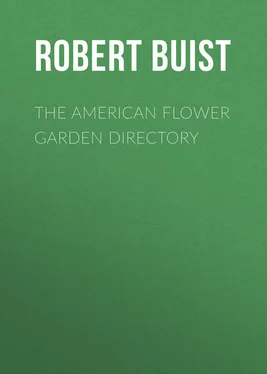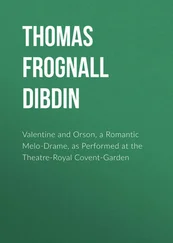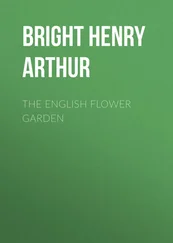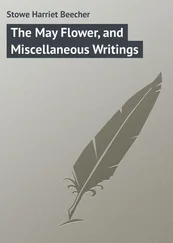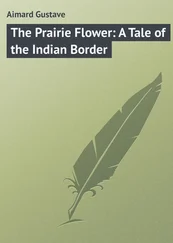Robert Buist - The American Flower Garden Directory
Здесь есть возможность читать онлайн «Robert Buist - The American Flower Garden Directory» — ознакомительный отрывок электронной книги совершенно бесплатно, а после прочтения отрывка купить полную версию. В некоторых случаях можно слушать аудио, скачать через торрент в формате fb2 и присутствует краткое содержание. Жанр: foreign_antique, foreign_prose, на английском языке. Описание произведения, (предисловие) а так же отзывы посетителей доступны на портале библиотеки ЛибКат.
- Название:The American Flower Garden Directory
- Автор:
- Жанр:
- Год:неизвестен
- ISBN:нет данных
- Рейтинг книги:5 / 5. Голосов: 1
-
Избранное:Добавить в избранное
- Отзывы:
-
Ваша оценка:
- 100
- 1
- 2
- 3
- 4
- 5
The American Flower Garden Directory: краткое содержание, описание и аннотация
Предлагаем к чтению аннотацию, описание, краткое содержание или предисловие (зависит от того, что написал сам автор книги «The American Flower Garden Directory»). Если вы не нашли необходимую информацию о книге — напишите в комментариях, мы постараемся отыскать её.
The American Flower Garden Directory — читать онлайн ознакомительный отрывок
Ниже представлен текст книги, разбитый по страницам. Система сохранения места последней прочитанной страницы, позволяет с удобством читать онлайн бесплатно книгу «The American Flower Garden Directory», без необходимости каждый раз заново искать на чём Вы остановились. Поставьте закладку, и сможете в любой момент перейти на страницу, на которой закончили чтение.
Интервал:
Закладка:
Roses of the hardy kinds (termed garden roses) that were not attended to in November, should, if the weather permit, be dressed and pruned forthwith. In small gardens, where these are generally attached to the walls and fences, neatness should be a very particular object. If any of such bushes have got strong and irregular, the most proper method to bring them to order, will be to cut down each alternate shoot of the bush to within a few inches of the surface, thereby renovating it, and, in part, preserving the flowers. Those that are cut down will put out several luxuriant shoots, which must be regularly tacked in, spreading them in a fan shape. These, in another year, will flower well, when the others may go through the same operation. Thus, in two or three years, the bushes will have resumed a different, and more agreeable aspect. By the above treatment, these ornaments of the garden will always have a neat and healthful appearance, and the roses will be much finer. Where they are intended for the borders, they should never be allowed to get too high. In a border from four to six feet, they ought never to exceed four feet at the back of the border, and in front, one foot, after being pruned; they can be kept down by the above method. It is not advisable to cut down rose bushes all at once, unless no regard is paid to flowering. The roses that are in grass plats would have a superior appearance in every respect, if they were kept and trimmed like small trees. They may be of different sizes and heights, according to the extent of the grass plat or clump. A single stem may arise from six inches to six feet, with a head in proportion to the height of the stem. Where it is necessary to have them above two feet, and likewise to carry a good head, inoculation must be resorted to, which, in the months of June and July, will be fully treated of. All under two feet (except the weak growing kinds) will do on their own stems, taking care not to allow shoots to arise from the bottom during the summer. For directions for pruning climbing roses, see March and April.
OF PLANTING SHRUBS, &c
As soon as the frost is out of the ground, these should be planted if the soil is not too wet. Where soil is binding, upon no consideration plant in it while wet, rather defer it until the end of March.
Shrubs, if they are well arranged, are the chief ornament, give the most pleasure, and afford the greatest delight that we enjoy in our gardens. Although they give no sort of nourishment, nor produce any edible fruits, yet they are particularly grateful and conducive to our enjoyments. Our walks in summer would be oppressive, but for their agreeable shade; in the fall and winter, we would be left exposed to the chilling winds, but for the shelter they afford.
Likewise they produce a great variety of flowers; a varied foliage, and are standing ornaments that give no great trouble. In the character of screens they are particularly useful, whether to hide disagreeable objects, or as a guard against the weather; and for either of these purposes, they can be planted nearer to the house than large trees. Or, if they are planted in masses at a distance, they soon become agreeable objects, frequently very much improve the scenery of the place, become objects of utility as well as ornament, and, in such case, afford the highest satisfaction. When formed so as to exclude offices from the view of the house, or for sheltering the latter, or for connecting the house with the garden, orchard, or any similar purpose, shrubs are both useful and interesting.
Where many shrubs are to be planted, the disposing of them properly is a matter of considerable importance to the future welfare of the whole; and, whether deciduous or evergreens be mixed or grouped, that is, indiscriminately planted together, or the evergreens planted by themselves, as is frequently done, a regular and natural arrangement is indispensable for establishing ornament.
Arranging, no doubt, depends very much on fancy; still, there ought always to be plenty of evergreens planted, that the whole may be more cheerful in winter.
If shrubberies were made to a great extent, the scenery would be much more varied and characteristic by grouping judiciously than by indiscriminately planting.
However, in small flower gardens and shrubberies, the latter has to be adopted. In such places, tall growing kinds should never be introduced, unless merely as a screen from some disagreeable object, for they crowd and confuse the whole. The dwarf and more bushy sorts should be placed next to the walks, or edges, in order that they may conceal the naked stems of the others. Generally when shrubs are planted, they are small; therefore, to have a good effect from the beginning, they should be planted much thicker than they are intended to stand. When they have grown a few years, and interfere with each other, they can be lifted, and such as have died, or become sickly, replaced, and the remainder can be planted in some other direction. Keep them always distinct, one from another, in order that they may be the better shown off. But, if it is not desired that they should be thicker planted than it is intended to let them remain, the small growing kinds may be four or five feet apart; the larger, or taller sorts, six or eight feet, according to the condition of the soil.
Thick masses of shrubbery, called thickets, are sometimes wanted. In these there should be plenty of evergreens. A mass of deciduous shrubs has no imposing effect during winter; and, as this is not the proper season for planting evergreens, (April and October being best,) small stakes can be placed in the destined spot. Planting in rows, or in any plan of a formal character, should at all times be avoided.
In planting at this season, observe that the roots are not much exposed to the air, especially if the wind be high and sharp; but it is always better, if possible, to defer the business until good, mild weather. According to directions in November, the ground will be well prepared, and only requires a hole dug for the reception of the roots, which must be considerably larger, that the roots may not be in the least confined. Break the earth well at bottom, put in as much as will receive the plant from one to two inches (according to its size) lower than it has previously been in the Nursery. If any of the roots are bruised or broken, cut them off; then place the plant in the centre of the hole, breaking fine all the soil that is put in, at the same time shaking the stem a little, that the earth may mix with the roots when full up; press all the soil down with the foot, that it may, in some degree, consolidate about the roots, and support the plant. If it is tall, or top heavy, put in a good stake for a support, and place a small, bandage between the stake and stem of the plant, shrub, or tree, where the tie is to be made, to prevent the bark from suffering by friction. Observe always before planting, if the soil is not suitable, to supply that which is congenial to the nature of the intended plant.
When shrubs or trees are to be carried to any distance, the roots should be carefully kept from air, by tying damp moss, straw, or Russia mats about them, as circumstances will admit; their success greatly depends on due attention being paid to this.
OF HYACINTHS AND OTHER BULBOUS ROOTS
It sometimes occurs that Hyacinths and other bulbous roots that were planted in the fall, are thrown above ground by the frost. This will take place if the soil is inclined to moisture, and they not being deep enough planted. If such is the case, cover them with wood earth, old decayed tan, or soil, whichever is most convenient; if not done, the sun and air overpower the bulbs, and, although the fibres have hold of the ground, the flowers will be miserably weak. Hyacinth bulbs, and many others of Holland, are very hardy. Even exposure to our severest frosts would not kill them, but they would be much weakened.
Читать дальшеИнтервал:
Закладка:
Похожие книги на «The American Flower Garden Directory»
Представляем Вашему вниманию похожие книги на «The American Flower Garden Directory» списком для выбора. Мы отобрали схожую по названию и смыслу литературу в надежде предоставить читателям больше вариантов отыскать новые, интересные, ещё непрочитанные произведения.
Обсуждение, отзывы о книге «The American Flower Garden Directory» и просто собственные мнения читателей. Оставьте ваши комментарии, напишите, что Вы думаете о произведении, его смысле или главных героях. Укажите что конкретно понравилось, а что нет, и почему Вы так считаете.
